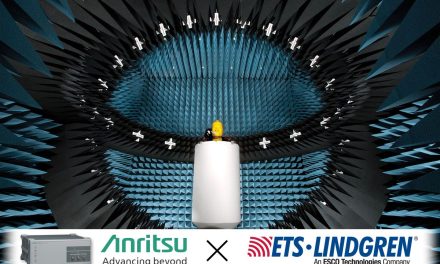 Jeff Poole, RF and Microwave Field Applications Engineer at Agilent Technologies explores a flexible solution for testing 802.11ad devices
Jeff Poole, RF and Microwave Field Applications Engineer at Agilent Technologies explores a flexible solution for testing 802.11ad devices
The IEEE 802.11ad standard is an up-and-coming technology expected to enable wireless connectivity of up to 7Gb/s in data, display and audio applications.
Per the January 2011 draft standard, signals will occupy the unlicensed 60GHz frequency band, and compliant devices will provide backward compatibility with the 802.11 standard. As a result, tri-band devices will operate at 2.4, 5.0 and 60GHz.
Many companies have launched product development projects and developers face challenges that stretch from system-level design to verification testing. For example, thorough testing of 802.11ad transmitters and receivers requires three essential elements: arbitrary waveform creation; frequency conversion; and signal, modulation and spectrum analysis.
In the development of new 802.11ad products, testing must address the transmitter and receiver portions of each device. In a tri-band device, signals have three key attributes: they operate at 2.4, 5.0 and 60GHz, carry various modulation schemes, and have bandwidths in either the 20MHz range (802.11a/g/n and 802.11b/g), 40GHz range (802.11n), up to 80/ 160GHz contiguous or noncontiguous (802.11ac), or 2.0GHz (802.11ad). At various points within the radio block diagram the signals may operate in the baseband, intermediate frequency (IF) or radio frequency (RF) range.
As a general problem statement, the IEEE 802.11ad draft standard includes specific measurements with expected values for transmitters and receivers. Examples include receiver minimum sensitivity and transmit error vector magnitude (EVM; see Figure 1).
Going beyond the draft specifications, design teams may also want to verify the overall performance of a new 802.11ad device. In such cases, they will want to look at important measurements such as match, gain or loss through frequency converters, and nonlinear tests such as p1dB under various operating conditions.
Thorough testing of 802.11ad transmitters and receivers at baseband, IF and RF requires three essential elements: arbitrary waveform creation, frequency conversion, and signal, modulation and spectrum analysis.
Creating a solution for testing
Starting at the top of Figure 2, waveform creation at baseband frequencies is accomplished with specialised software and an arbitrary waveform generator (AWG). In this case a 4.2GSa/s AWG is used to create highly accurate simulations of standard-compliant signals that can be applied to transmitters and receivers.
Characterisation of device performance versus the standard also requires generation of impaired or corrected signals that mimic real-world issues such as fading, distortion, I/Q skew and carrier-to-noise problems. One way to accomplish this is with waveform-creation software that can download waveforms into AWG memory.
Moving down the figure, IF-band frequency conversion is accomplished with an upconverter. This configuration uses a vector signal generator with optional wideband external I/Q inputs. As shown, the AWG is used to directly drive the signal generator’s internal I/Q modulator with I/Q modulation bandwidth of up to 2GHz.
A custom-designed upconverter provides frequency conversion to the RF range. A high-precision microwave analogue signal generator provides a stable LO signal for the upconverter.
Signal analysis: IF and RF elements on the receiver side
In the lower half of the figure, the custom-designed downconverter provides frequency translation to the IF band. In this configuration a high-performance oscilloscope (up to 32GHz analogue bandwidth) and an advanced signal analyser (with optional high-end frequency coverage from RF to millimeter wave) provide signal, modulation and spectrum analysis capabilities.
This configuration also includes vector signal analysis (VSA) 89600B software from the company, supporting more than 70 signal formats.
MATLAB is another important part of the receiver-side solution. Here, it provides a software environment for measurement automation and data analysis. For example, it can be used to create and apply custom measurements, filters, processing and equalisation-capabilities. This can also be used to create 2D and 3D data plots derived from measured data.
For further RF characterisation from 10MHz to 67GHz, a microwave network analyser provides single-connection measurements of active devices such as amplifiers, mixers and also frequency converters.
To simplify test configuration, built-in elements include a second signal source, a combiner and internal signal-routing switches. Example measurements include S-parameters, gain compression, two-tone measurements, and noise-figure measurements on converters and two-port devices.
The configuration presented here provides a range of testing and analysis capabilities that address the challenges of developing 802.11ad transmitters and receivers.
The suggested combination of flexible software elements and high-performance instrumentation is scalable and reconfigurable to address other technologies as well as future projects.
Agilent Technologies


